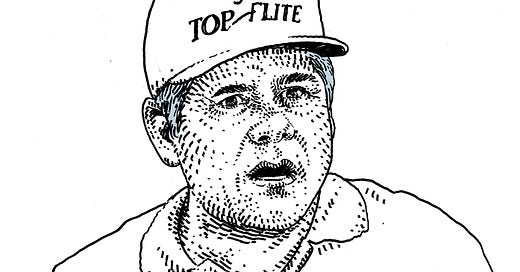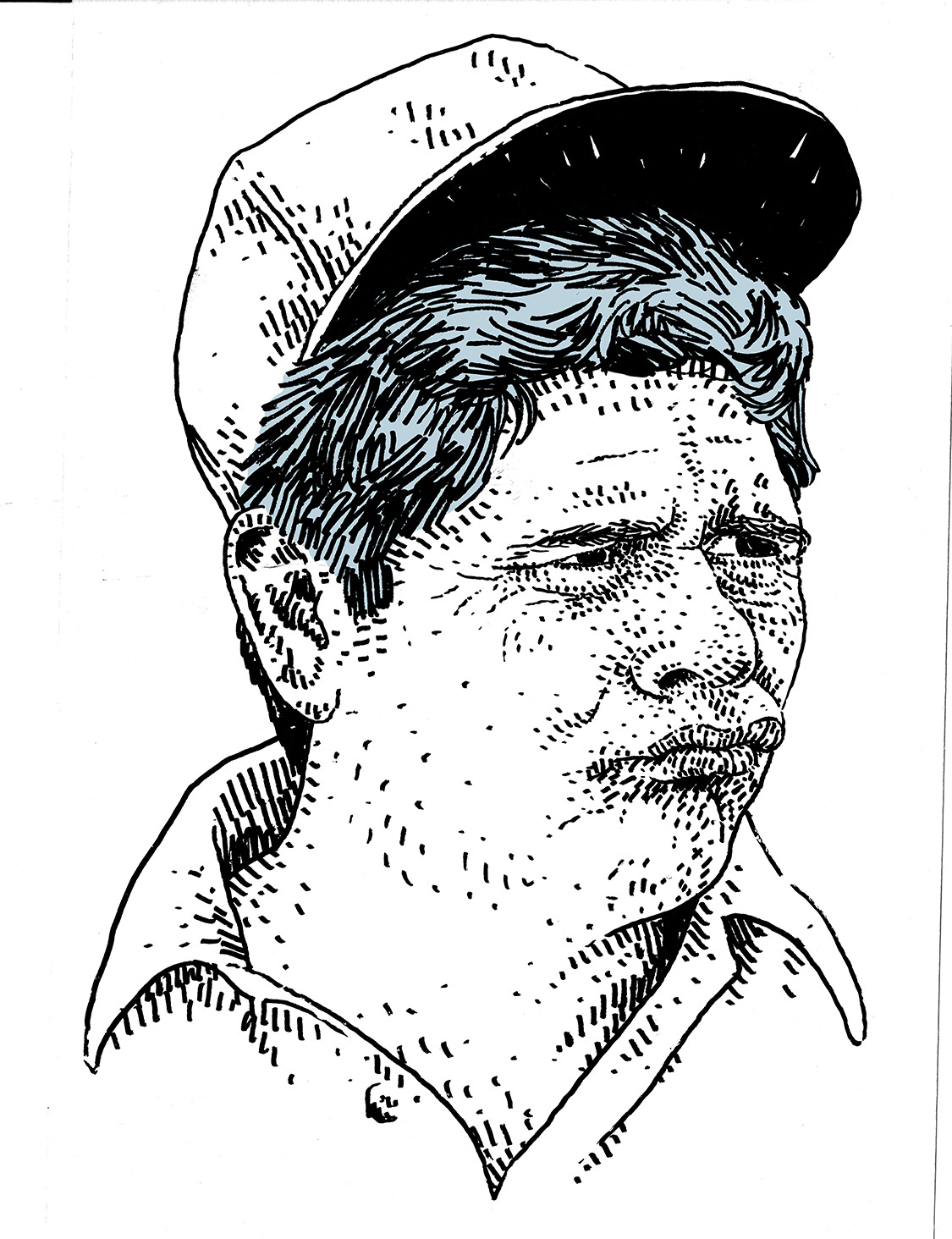Welcome to Sports Stories, an illustrated newsletter at the intersection of sports and history. If you’re not already a subscriber, please consider joining up here — we have both free and paid options.
Sometimes this newsletter is a place to dig up obscure tales and explore the tragic and raw elements of how sports and society intersect. Other times it’s a place to simply celebrate a unique and beloved athlete like Lee Trevino.
He’s one of the great golfers of all time. But when I think about Lee Trevino, the first thing that comes to my mind is his cameo in Happy Gilmore. He shows up intermittently throughout the movie, shaking his head every time Adam Sandler does something inappropriate. In this way, he’s kind of like a stand in for the disappointed golf establishment.
But what I didn’t realize as a kid watching the movie was that Lee Trevino was how ironic that bit part was: Trevino only utters one line in Happy Gilmore (“Grizzly Adams did have a beard”), and is otherwise silent. But the real Lee Trevino was famously chatty on the golf course -- sometimes to the irritation of more turgid golf types in his orbit. And his background is anything but the classic tale of country club insularity and privilege.
Lee Trevino was raised by his mother Juanita in the Texas cotton fields. His family had no money, no electricity, and certainly no history of golfing. But he got a job as a caddy and taught himself to play: first as a teenager, then in the Marine Corps, then when he got home. He worked construction building the back nine of a golf course in Dallas, and in his off hours, he would hit balls on the front nine when nobody was around.
This was how Lee Trevino made himself great. He started hustling players around Dallas and making good money. Then he entered local tournaments and started winning them. Soon enough, he had his PGA card.Soon enough, he was winning the U.S. Open.
Trevino had a funky swing and a unique style on the course. He was hunched over and bent his knees and he hit every single ball perfectly. (I am not a golfer, but I have now fallen halfway down the rabbit hole of swing analysis videos on YouTube, and boy is it deep.) There was nobody who looked, talked, or acted like Trevino. He went by Super Mex.
To understand just how much of a shock Trevino was to the system of golf, here’s an excerpt from a Sports Illustrated story by Dan Jenkins, who is widely considered to be the greatest golf writer of all time. This was published after Trevino came out of nowhere to win that first U.S. Open in 1968. It reads like it:
Super Mex is what he called himself. Super Mexkin. And there he was out there in the midst of all of that U.S. Open dignity with his spread-out caddie-hustler stance and his short, choppy public-course swing, a stumpy little guy, tan as the inside of a tamale, pretty lippy for a nobody, and, yeah, wearing those red socks. And here were all of these yells coming from the trees and the knolls of the Oak Hill Country Club in Rochester, coming from all of the other Lee Trevinos of the world. "Whip the gringo," hollered Lee's Fleas, a band of instant Mexicans enthusiastic enough to rival anybody's army, some of them $30-a-week guys like Trevino himself was just a little more than a year ago.
Despite the blatant and casual racism on display, Dan Jenkins loved Trevino. He said he was the best thing to happen to golf since Arnold Palmer. Trevino kept winning. He won the U.S. Open, the British Open, and the PGA Championship two times apiece. He never won the Master’s, but that might be because he spent his prime avoiding the tournament -- he felt uncomfortable amongst all the stuffy old people. During the 1971, U.S. Open playoff, Trevino pulled a rubber snake out of his bag and threw it at Jack Nicklaus. Then he won.
In 1975, Trevino was playing in the Western Open in Illinois when he was struck by lightning. He survived, but he would never completely recover from the back injuries he suffered. Still, over the course of years, he found his game again. Trevino won his final major, the PGA Championship, in 1984. He was 44 years old.
Here’s a delightful video of Trevino hitting a hole in one in a televised skins game a couple years after that (made even more delightful by the fact that it is broadcast by Vin Scully):
By the 1990s, Trevino had transcended golf and fully become a pop culture phenomenon. He had a Nintendo game called Lee Trevino’s Fighting Golf. Why was it called fighting golf? I have no idea. There was no fighting. Anyway, you couldn’t play as Lee Trevino, but there was a character named Super Mex.
It was also famously parodied on the Simpsons, as Lee Carvallo’s Putting Challenge:
Then, finally, there was Happy Gilmore -- a movie Trevino said he would not have appeared in had he known that it would feature such bad language.
Thanks for reading Sports Stories. We’ll see you next week.





“Water water everywhere, and not a drop to drink.” Classic Vin. I loved watching The Skins Game as a kid. Great memories, great story.